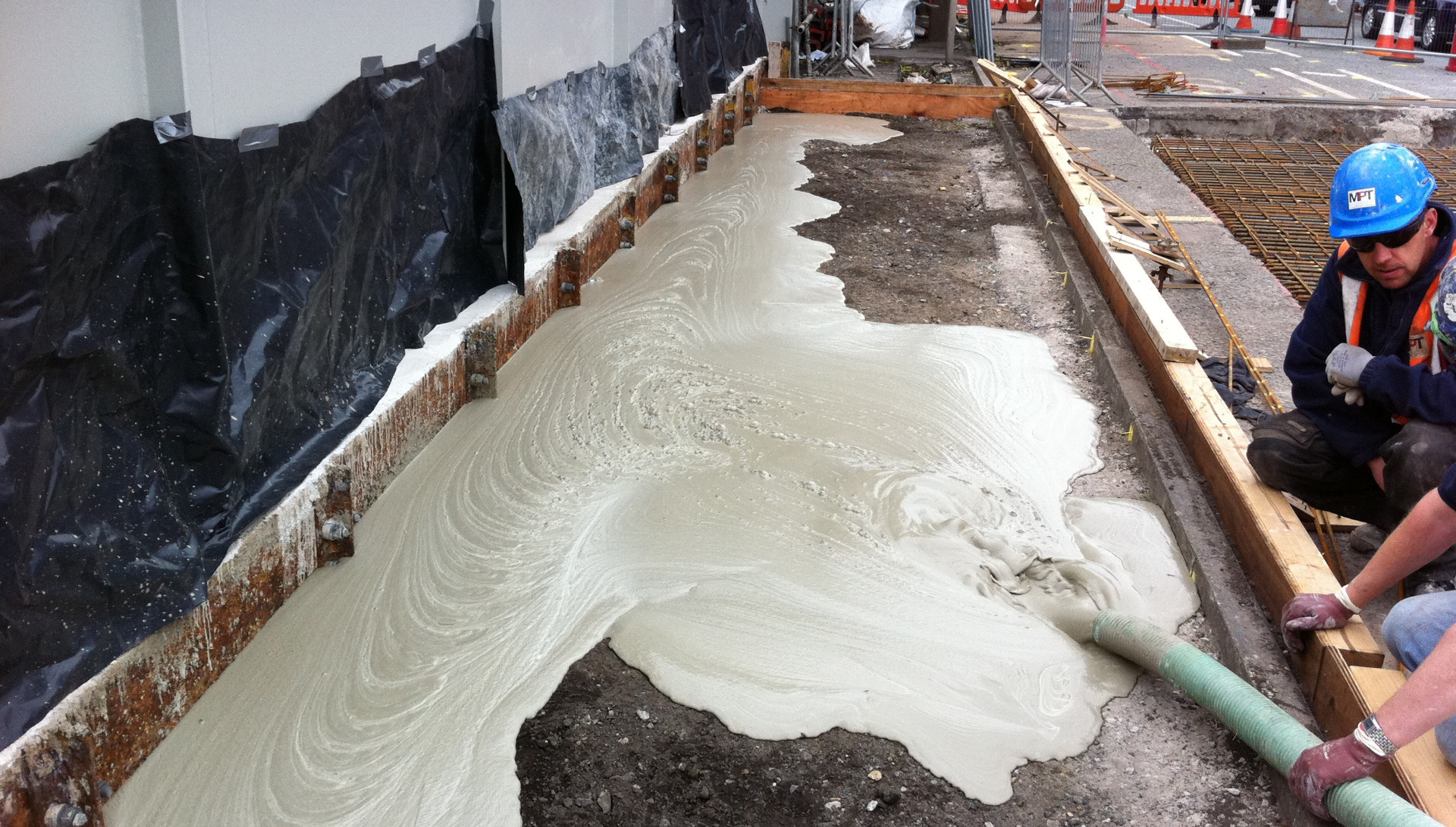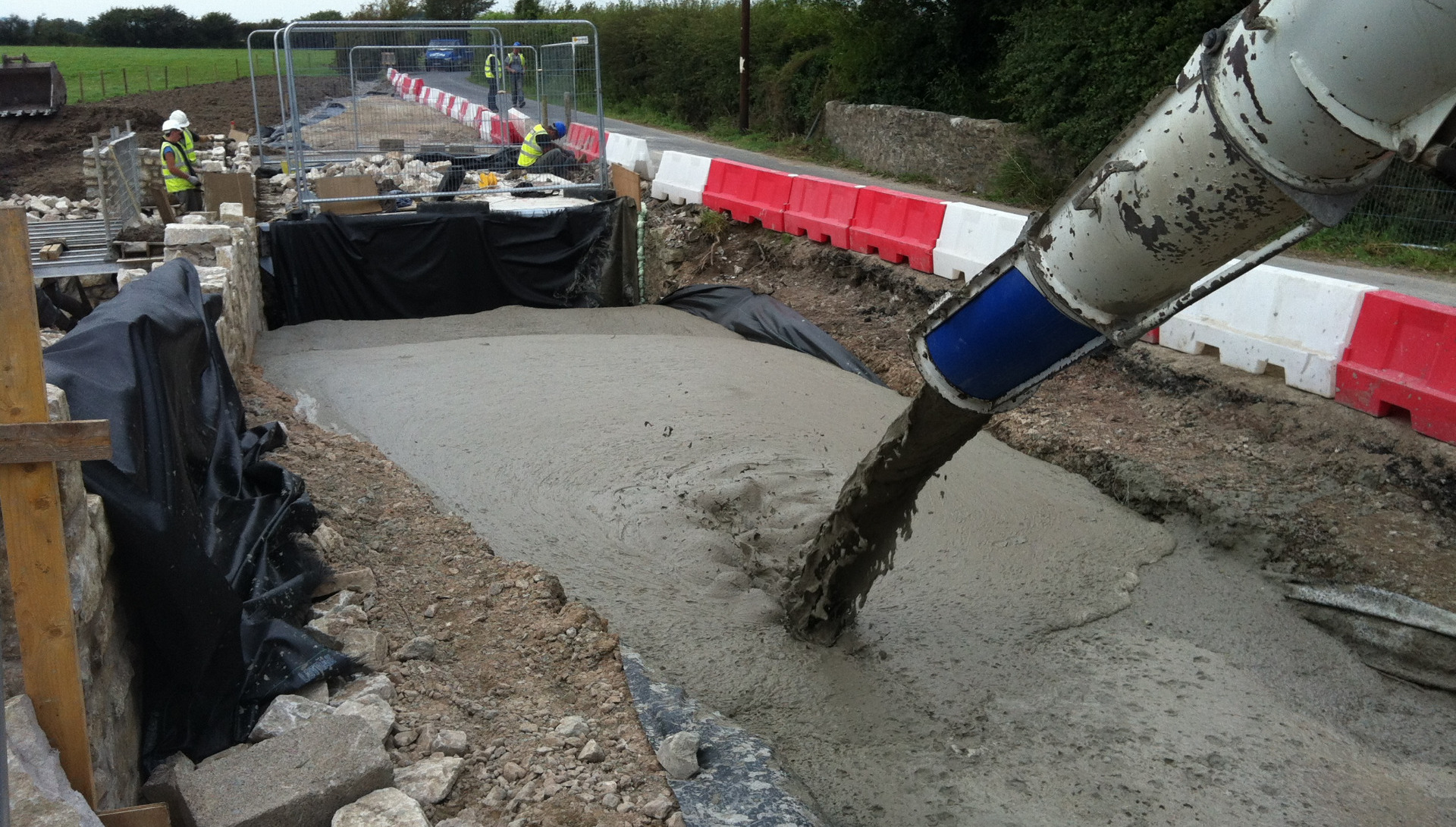case study: Farnworth Tunnels Infilling Works, Bolton
GS Foam Concrete (GSF) was contacted by Murphy Rail to undertake the foam concrete infilling works at Farnworth Tunnels. The twin tunnels form part of the railway between Bolton & Manchester and are 300m long.
The project was to increase the size one of the brick tunnels to accommodate larger electrified trains which would to improve the train times between Bolton & Manchester.
Concrete Requirements
The foam concrete was to be used to infill one of the tunnels to make the adjacent tunnel was structurally strong enough to accept the tunnel boring machine (TBM) which was going to tunnel through to increase the tunnel size for the electrification of the line.
The volume required to infill the tunnel was 7,800m3. The foam concrete had to be of low strength to enable the TBM to bore through after completion of the foam concrete works.

On-site Batching
GSF and Aggregate Industries worked together to reduce the truck movements from the local concrete plant by installing on-site batching facilities which would also increase the daily output we required to achieve the foamed volume per day as we had only 17 days to complete the infilling works.
Aggregate Industries based on site 4 concrete mixer trucks at 2 per 10 hour shifts giving us base mix material for approximately 20 hours per shift. Sand bays and a constant water source were supplied by Murphy rail to assist with the plant requirements.
The foam concrete mix used was: P370 @ 1100kgs wet density & 1n/mm2.

Infilling the Tunnels
GSF’s method was to install sacrificial 10b hoses to the tunnel soffit using the access from the shaft in the centre of the tunnel, all the foam concrete would then be pumped from the centre shaft.
GSF installed the sacrificial hoses @ 140m one side and 130m the other side with both pipelines finishing at the base of the shaft to allow GSF to disconnect to either side once the daily amount had been placed in that side.
Murphy rail installed shutters at either side of the tunnels to prevent the foam concrete from escaping during the infilling works. The foam concrete was pumped through the sacrificial hoses until the daily amount had been placed. The daily average placed was 458m3 over the 2 shifts with around 17 hours of constant pumping, the 3 hours lost was for the changing of trucks, shift changes of site personnel and washing off.
The foam concrete was pumped through each pipeline until that part of the tunnel was full; we then disconnected the pipeline and retracted the pipeline until we got to the next void.

The foam concrete had self-levelled for approximately 60m and beyond this the foam concrete had levelled out to form a wedge type shape towards the shaft. We then reconnected onto the pipeline at the lowest point of the foamed concrete wedge and commenced the infilling.

Once 80% of the tunnel on both sides were completely full we infilled directly into the tunnel via the shaft so the foam concrete would flow both sides simultaneously and fill the remainder of the tunnel voids. The works were completed on time and the average cube result after 28 days was 1.5n/mm2 @ 1050kgs dry density.







